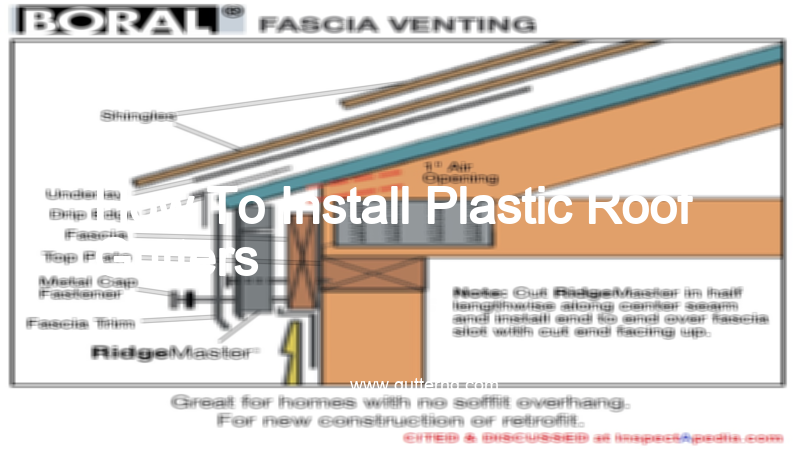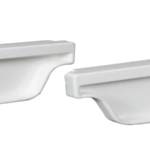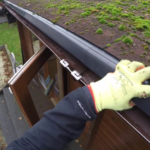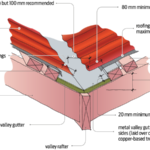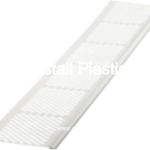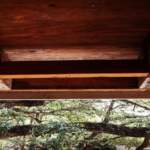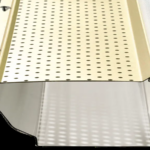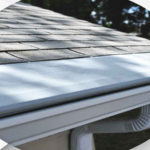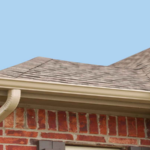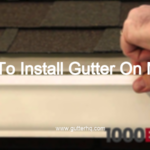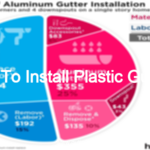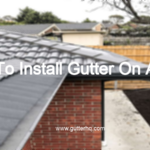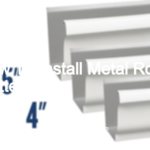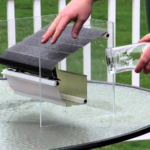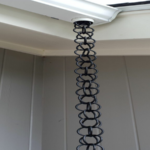Installing plastic roof gutters is a relatively easy process that can be completed in a few hours. The first step is to measure the length of the area where the gutters will be installed and cut the gutters to size. Next, use a drill to make holes in the fascia board (the board that runs along the edge of the roof) for the gutters to be attached to. Finally, use screws or nails to attach the gutters to the fascia board.
How should plastic gutters be installed?
- It is important to clean the surface where the plastic gutters will be installed. Use a power washer to remove any dirt, grime, or debris.
- Once the surface is clean, use a tape measure to determine the length and width of the area where the gutters will be installed.
- Cut the plastic gutters to the desired length and width.
- Install the gutter hangers onto the gutters.
- Position the gutters onto the surface where they will be installed.
- Use screws to secure the gutters in place.
- Connect the pieces of the gutters together.
- Install the downspouts onto the gutters.
- Position the plastic gutters so that they slope slightly downward. This will allow water to flow freely through the gutters.
- Use screws to secure the gutters in place.
How do you install plastic gutter hangers?
- Begin by finding the location where you want to install the hangers. It is important to make sure that the hangers are evenly spaced.
- Once you have found the location, use a drill to make pilot holes for the hangers.
- Next, take the hangers and insert them into the pilot holes.
- Once the hangers are in place, use a hammer to drive them in until they are flush with the surface.
- Finally, use screws or nails to secure the hangers in place.
What screws to use for plastic gutters?
There are many types of screws out there, but not all of them are created equal. When it comes to plastic gutters, you need to make sure you use screws that are specifically designed for that material. Otherwise, you run the risk of the screws coming loose or causing damage to the gutters.
Each of these screw heads has a slightly different purpose, so make sure you choose the right one for your needs. For instance, pan head screws are typically used for attaching metal to metal, while button head screws are better for plastic to metal applications.
If you’re not sure which type of screw to use, ask a hardware store employee or consult the manufacturer’s instructions for your particular gutter system.
How do you install plastic gutter end caps?
To install a plastic gutter end cap, first clean the gutter of any debris. Next, use a utility knife to cut the end cap to the desired size. Once the end cap is the correct size, use a caulking gun to apply a generous amount of sealant to the end of the gutter. Finally, press the end cap onto the gutter, making sure that it is fully seated. Allow the sealant to dry for 24 hours before using the gutter.
Do you glue plastic guttering?
Yes, you can glue plastic guttering. There are a few things to keep in mind when doing so, however. First, make sure that the guttering is clean and dry before attempting to glue it. Second, use a strong adhesive that is specifically designed for plastic. Third, apply the adhesive evenly to both surfaces that will be joined. Finally, allow the adhesive to dry completely before using the guttering.
How do you tell if gutters are installed correctly?
To ensure your gutters are installed correctly, you should first consult with a professional. They will be able to tell you what type of gutters will work best for your home and how to properly install them.
Once you have your gutters, you’ll want to check them periodically to make sure they’re still in good shape. One way to tell if they’re installed correctly is to see if water is draining properly away from your home. If you notice any pooled water or water overflowing, then you’ll know there’s an issue.
Another way to tell if your gutters are installed correctly is to look for any gaps or cracks. These can allow water to seep through and cause damage to your home. If you see any of these, you’ll need to have them repaired as soon as possible.
Finally, you should also listen for any strange noises coming from your gutters. This could be a sign that they’re not installed correctly or that there’s something blocking the flow of water. If you hear anything unusual, be sure to contact a professional to have them take a look.
Should gutters be tucked under drip edge?
There are a few schools of thought when it comes to the best way to install gutters. Some believe that gutters should be tucked under the drip edge, while others believe that the drip edge should be installed over the gutters. There are pros and cons to both methods, and ultimately the decision comes down to personal preference.
Those who believe that gutters should be tucked under the drip edge argue that this method provides a cleaner look and helps to keep leaves and other debris from clogging the gutters. This method also allows rainwater to flow more freely into the gutters, which helps to prevent overflowing. However, some drawbacks of this method include the fact that it can be more difficult to install gutters this way, and that they may not be as securely attached as when installed over the drip edge.
Those who believe that the drip edge should be installed over the gutters argue that this method provides more protection for the gutters and helps to keep them from being damaged by the elements. This method is also easier to install, although some argue that it does not provide as clean of a look. Ultimately, the decision of whether to tuck gutters under the drip edge or to install the drip edge over the gutters is a matter of personal preference.
Conclusion
If you’re looking for an easy and affordable way to protect your home from water damage, then installing plastic roof gutters is a great option. Not only are they easy to install, but they’re also very durable and can withstand even the heaviest rains. Plus, they’re much more aesthetically pleasing than traditional metal gutters, so they’ll add a touch of style to your home’s exterior.
